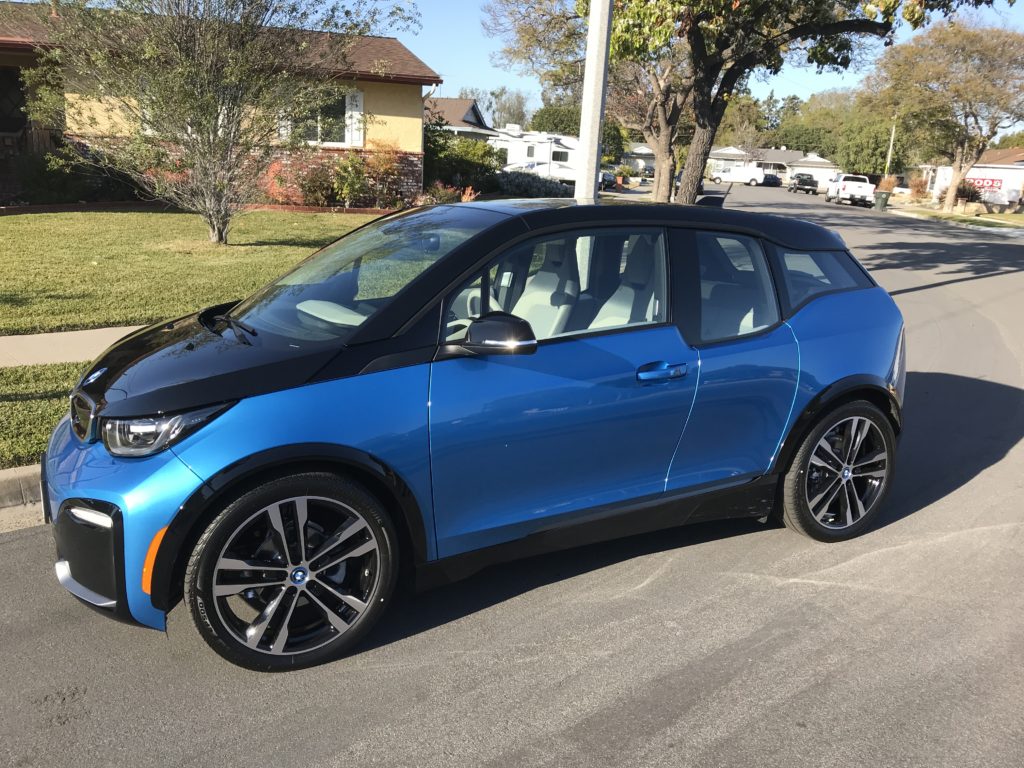
When Southern California Edison informed me about a new energy reducing partnership through BMW, which is offering the power company’s employees and residential customers discounts on the purchase of new i3 and i3s electric cars, I asked the next logical question.
“Hey, SCE, do you suppose your new BMW buddies would let me test drive one of these EVs?”
Reddy Kilowatt’s answer was that he would ask the kind folks at BMW of North America in Newbury Park, and before you could say deutsche Ingenieurskunst, a 2018 i3s Rex was in my driveway for an extended test drive.
My first impression was I loved the Protonic Blue paintjob and sporty tire and wheel combo with the BMW logo in the center.
To be perfectly honest, I also thought the i3s looked very small, not much longer than an electric golf cart.
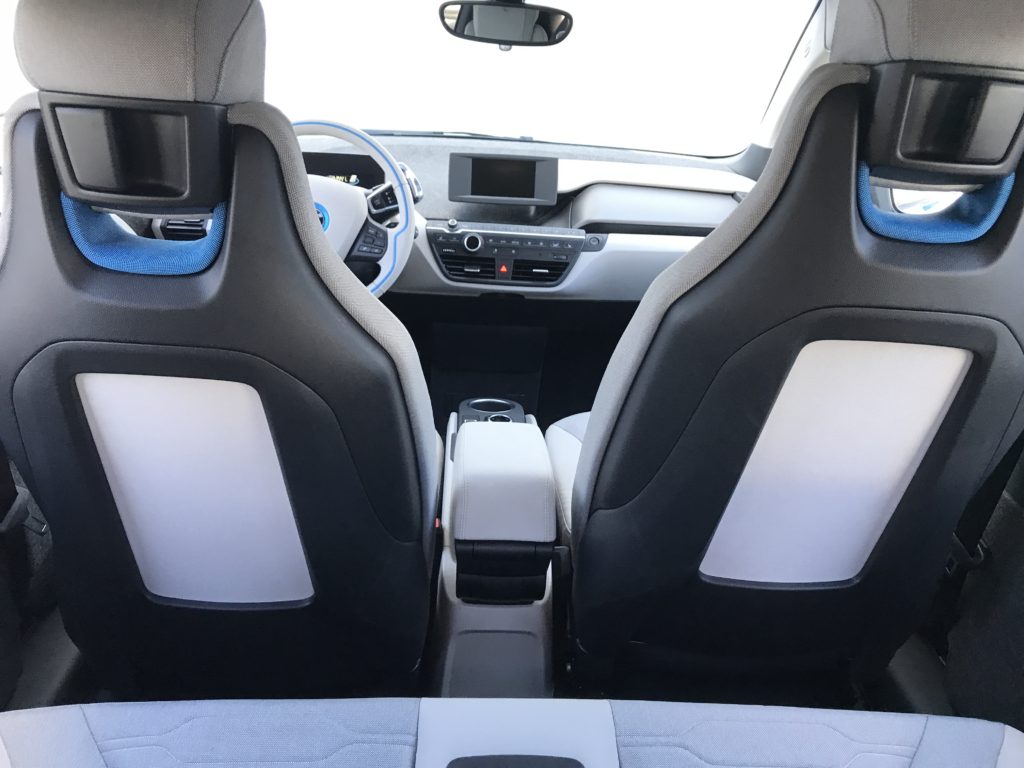
Any fears about that smallness transferring to a cramped interior disappeared once I got behind the wheel. A few days later, passengers who rode in the front and rear remarked that is was deceptively spacious inside.
The shapes, designs and materials used for the interior features are modern and eye-catching, like you really are driving into a brave, new EV world.
The given name for the upholstery is “BKCI Mega Carum Spice Grey Sensatec and Carum Spice Grey Cloth.”
“Mega” refers to the “Mega World” options that added $1,400 to the base $51,500 manufacturer’s suggested retail price. Also rolled into Mega World was the smoker’s package, the Sensatec and cloth floor mats and the Andesite Dark Matt Trim.
Other options included: tire pressure monitor, alarm system, universal garage door opener, keyless entry, rearview camera, cupholders, front seat heating, stronger electricity support, daytime driving light, navigation system, SiriusXM satellite radio and BMW Assist eCall and Teleservices.

Besides the elbow room inside, I was pleasantly surprised when I lifted the hatch back door and saw how much space there was in the trunk area. I have recently driven some hybrid and gas-powered vehicles for this column that don’t have as much trunk space as the i3s has. You can also push down the back row seats to create an even larger cargo area.
There was one thing that would take some getting used to if this was my every-day car. The start/stop button and gear indicators are on the same arm in the steering column (as seen in the photo below). While I quickly caught on to shift between drive, neutral and reverse, I found it difficult to fit my ham-hands between the opening in the steering wheel to push the stop/start button. Perhaps I just need more practice.
BMW says there is a method to their EV madness. The interior was reportedly designed in a way to get the maximum use out of a limited amount of space. The Bavarians are thinkers this way: The i3s and i3 have a carbon-fiber passenger cell riding on an aluminum chassis, which are lightweight and strong.
The drive this all produced was nothing to wheeze at. The i3s accelerated very quickly, even on an uphill on ramp onto a freeway, where it joined the normal flow of traffic as fast if not faster than I am used to in my Prius. It had a sporty drive-feel that was no doubt enhanced by wider tires and a springy suspension.
The helpful fellow from BMW informed me of the difference in EV braking, although: A) I am already used to it from some other electrics I have driven and, 2) I rather prefer it. Basically, once you step off the accelerator, the car slows as if braking, even if you have not hit the brake pedal. Here comes that method to madness stuff again: braking or decelerating generates more juice for the battery.
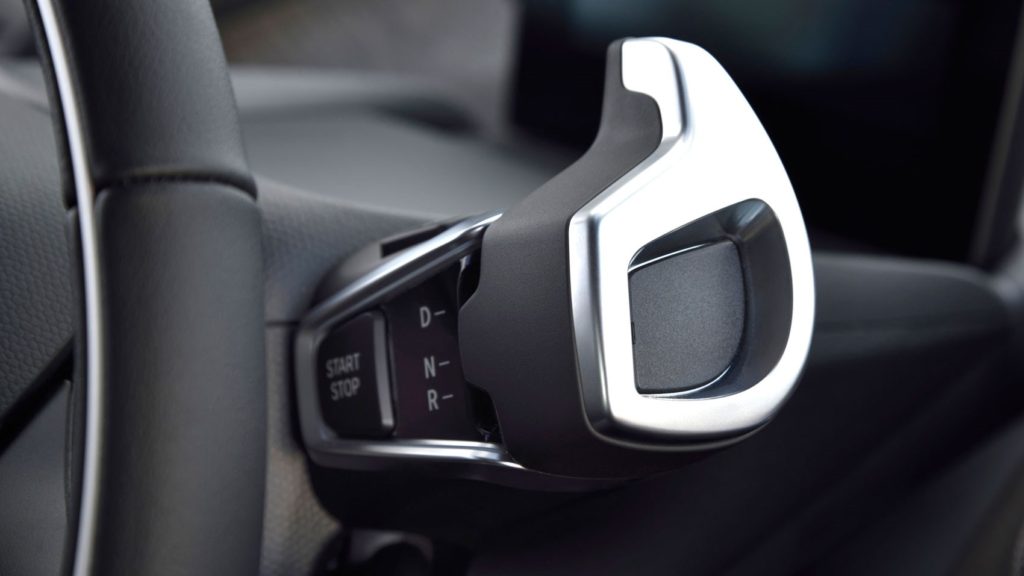
The BMW-bassador also noted that the i3s comes with a two-cylinder engine fed by a tank that will hold around a gallon of gas. The idea is if you run down the lithium-ion battery, the gas engine will kick in to keep you moving while it also rejuvenates the battery.
The gas engine with the 184-horsepower all-electric engine get a combined EPA-rated range up to 180 miles–or, as the fellow from the carmaker put it, “All the range you are going to need for a day.”
The options listed earlier in this article, the $1,000 moonroof, the nearly $1,000 destination charge and the $550 paint job pushed my test ride’s MSRP up to $55,445.
Pricey, indeed, but that’s where the new BMW/Southern California Edison venture kicks in.
They are offering a $10,000 discount per i3 or i3s to SCE employees and residential customers.
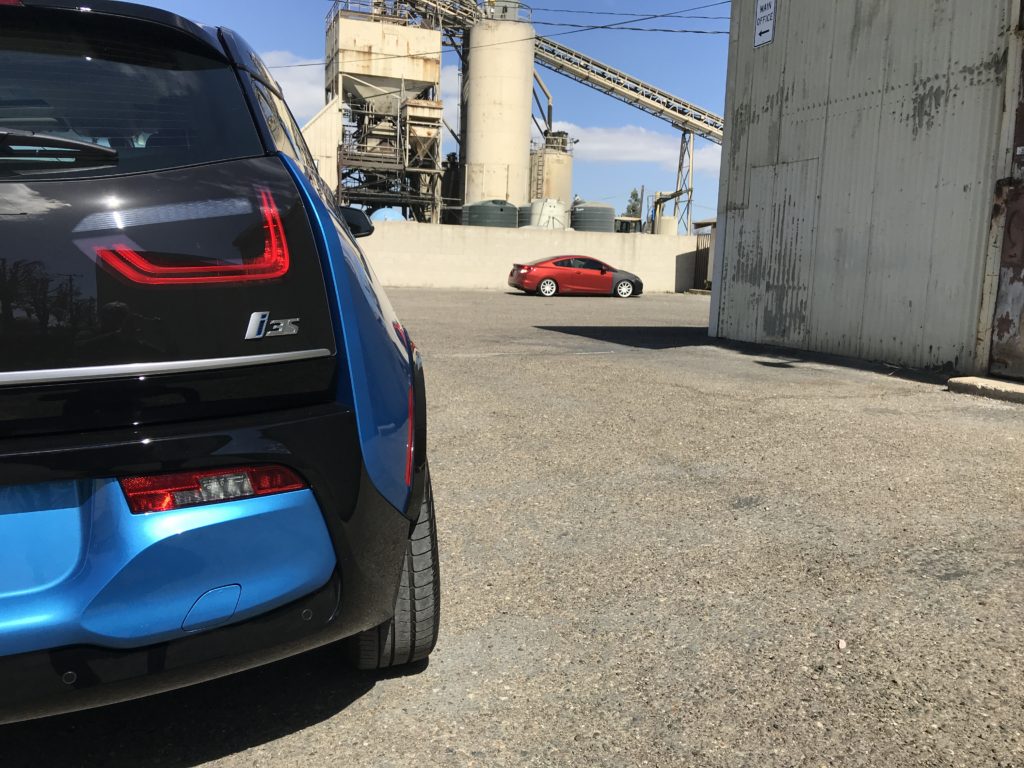
That is on top of state and federal incentives for EV purchases that could make the total discount more than $20,000, according to the electric company.
Why are they doing this? Edison offered these reasons:
- According to EarthJustice, between 12-15 Southern Californians die prematurely every day just by breathing.
- The California Air Resources Board has said that transportation contributes nearly 40 percent of the state’s GHG emissions and 80 percent of smog-forming NOx emissions.
- Governor Jerry Brown has set a new goal of putting 5 million zero-emission vehicles on California’s roads by 2030.
“SCE supports that goal and believes there should be 7 million EVs on the road by 2030,” says the power company.
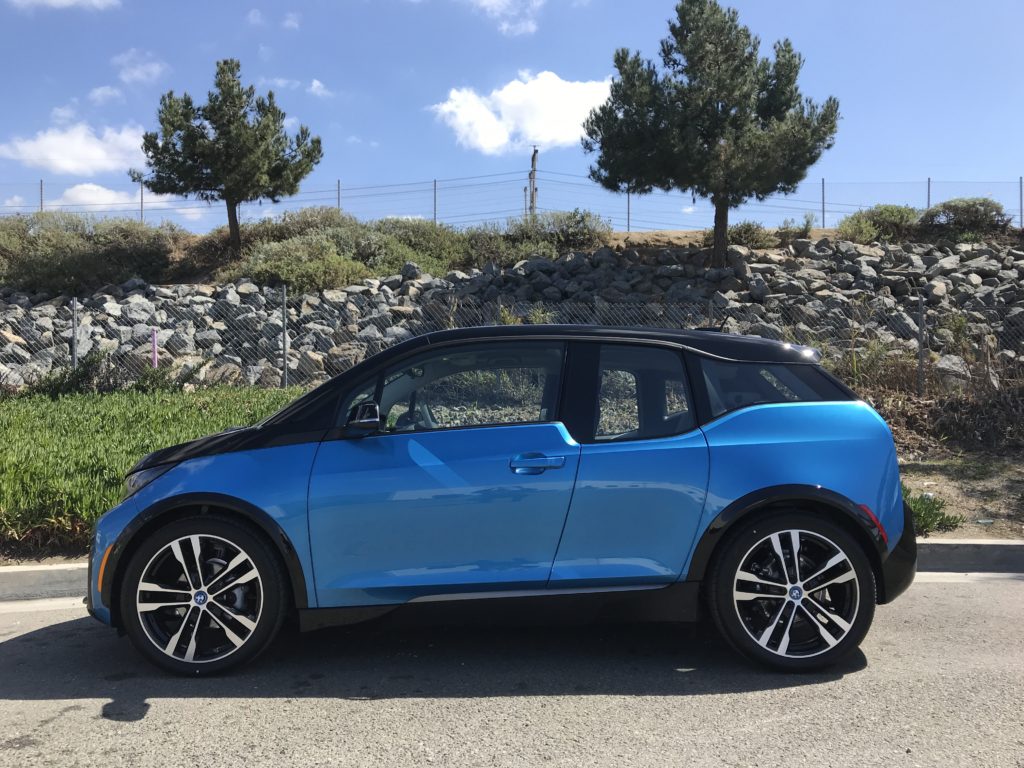
While I did not test the i3, I can tell you that it’s engine generates 170-hp to the i3s’ 184-hp. (You can also get a gas engine to extend the i3 range).
Edison is keen to point out that simply putting more Beemer EVs and any other EVs on the road is not the sole enviro-answer.
More EVs on the road require more EV charging stations alongside those roads.
Fortunately, Charge Ready is putting more chargers in public places, says SCE, which also points to new pilot programs aimed at increasing the availability of stations.
As ol’ Reddy Kilowatt put it to me, “Putting more EVs on the road, instead of combustion engine cars, can help clean our air.”

OC Weekly Editor-in-Chief Matt Coker has been engaging, enraging and entertaining readers of newspapers, magazines and websites for decades. He spent the first 13 years of his career in journalism at daily newspapers before “graduating” to OC Weekly in 1995 as the alternative newsweekly’s first calendar editor.

